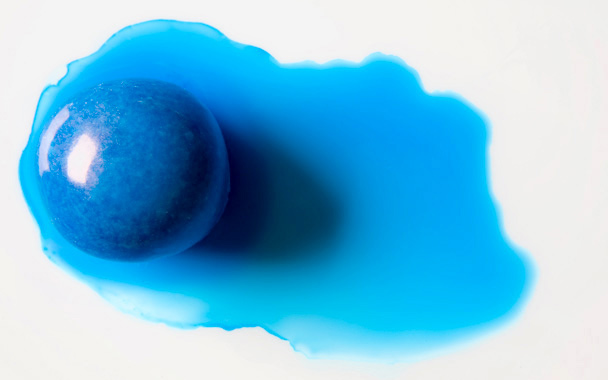
Blue food dye in candy
The consumer group The Center for Science in the Public Interest (CSPI) is calling for a ban on
artificial food dyes saying, said WebMD, that none of the food dyes - there are nine out there - that have been approved for use in the United States have been proven safe.
As a matter-of-fact, wrote WebMD, the CPSI said that these dyes are linked to significant health risks, citing both human and animal studies. "
For a food additive that does not provide any health or safety benefit whatsoever, there should be a very strict standard for safety. Food dyes do not meet that standard," CSPI Executive Director and study co-author Michael F. Jacobson, PhD, told WebMD.
"These colors carry risks," says Bernard Weiss, PhD, professor of environmental medicine at the University of Rochester. "The question for parents is this: Is it worth taking even minimal risks for benefits that do not exist?" quoted WebMD. Although Weiss was not a part of the Center's report, he did cite - as far back as 1980 -
clinical studies that proved food dyes can lead to behavioral problems in children, according to WebMD.
In 2007, a study conducted by the UK's food standards agency - the British agency that most mirrors the U.S. Food and Drug Administration (FDA), discovered that nine-year-olds who drank beverages made with food dyes were likelier to become hyperactive, wrote WEAU. In response, the agency asked food makers to remove six artificial colors used in foods in Britain by year-end 2009, said WEAU. Today, the European Union is also looking into taking action over the issue with food dyes, added WebMD.
Meanwhile, in 2008, the CSPI urged the FDA to ban the dyes, citing studies linking the dyes to behavioral effects that mimicked hyperactivity in children, said WebMD. The products were not banned and, now, the CPSI is saying that animal studies have linked the dyes and related chemicals in the dyes, to cancer, wrote WebMD.
"The FDA has not looked at the safety of food dyes in 15 or 20 years .... To accept widely used dyes that have these bound carcinogens is shameful," said Jacobson, quoted WebMD. "Why is the FDA sitting around doing nothing? Why does the FDA still permit food colors to be placed in food and marketed without adequate research on their neurotoxic properties? They have been screwing around with criteria for evaluating neurotoxicity for 30 years, and they still have not compelled the manufacturers to do it," said Weiss, wrote WebMD.
WEAU noted that the issue with behavioral problems could be more about coloring than sugar. "Michael would get easily frustrated. He would cry. He would get horrible headaches. He would throw up," said his mother, Beth Tribble, wrote WEAU. "I think a lot of the behavioral issues that parents are seeing is a direct result of the additives," she added.
"It's not that the food dyes are the underlying cause of ADHD or hyperactivity but if a kid is predisposed to it, then the dyes can trigger outbursts and behavioral outbursts," said Jacobson, quoted WEAU. "Some children, certainly not all children, react sharply. They lose control over their impulses. Physically, they jump around, they might yell, scream out," Jacobson added.

Reader Comments
to our Newsletter